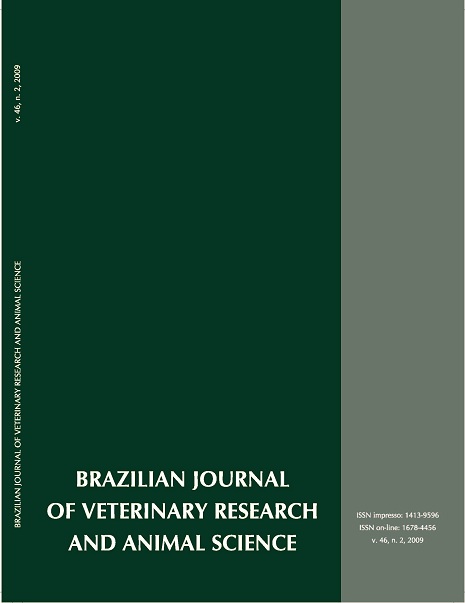Exploratory behavior of foals and mares front introduction of new objects in their environment
DOI:
https://doi.org/10.11606/issn.1678-4456.bjvras.2009.26758Keywords:
Exploratory behavior, Curiosity, Horses, FoalsAbstract
Exploratory behavior is done by animals to increase their interaction to the environment after be stimulated by curiosity, when animal feels that is in a secured place. The objective of this study was to evaluate exploratory behavior of foals front of introduction of new objects in their environment. Four foals and mares were observed in seven day sections of 60 minutes each one, always with a new object. No differences were verified about frequencies of looking, going to or touching into foals and mares. Total time of touching was 45,6 minutes, divided in 64 touches, mainly in first 20 minutes of each observation. However there is no statistical difference into solitary or impaired approaches and in impaired approaches there is no differences into foals or mares initiatives, foals done more solitary approaches than mares. Four animals touched the objects in first place, suggesting predisposition to this position based in individual differences. So, we concluded that new objects can stimulate similarly foals and mares to exhibit exploratory behavior, but foals show more manipulation activity, suggesting that are more curious than mares and predisposition to touch objects first depends of individual differencesDownloads
Download data is not yet available.
Downloads
Published
2009-04-01
Issue
Section
UNDEFINIED
License
The journal content is authorized under the Creative Commons BY-NC-SA license (summary of the license: https://
How to Cite
1.
Guirro ECB do P, Barbalho PC, Costa MJP da. Exploratory behavior of foals and mares front introduction of new objects in their environment. Braz. J. Vet. Res. Anim. Sci. [Internet]. 2009 Apr. 1 [cited 2024 Jul. 26];46(2):122-9. Available from: https://www.revistas.usp.br/bjvras/article/view/26758





